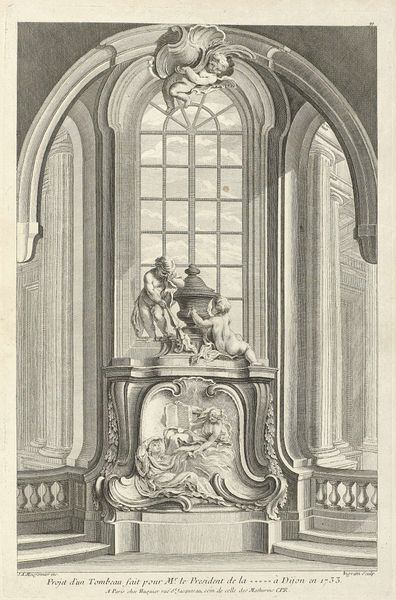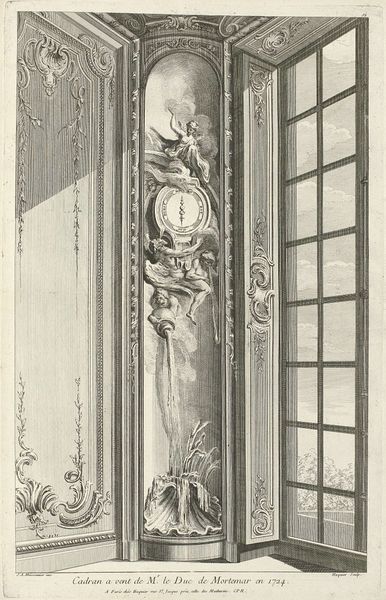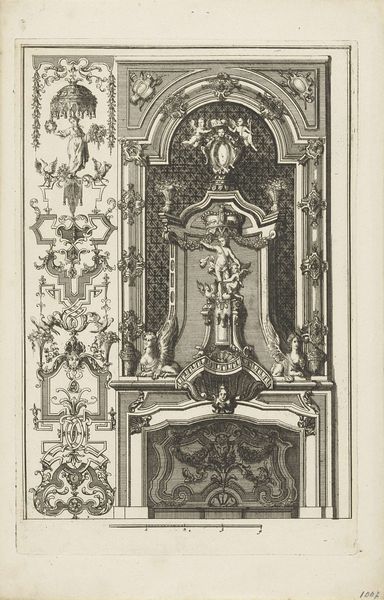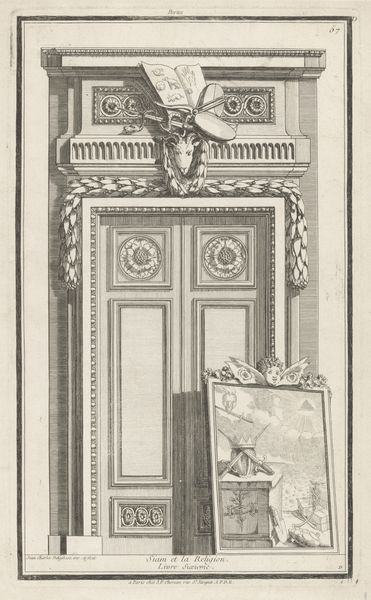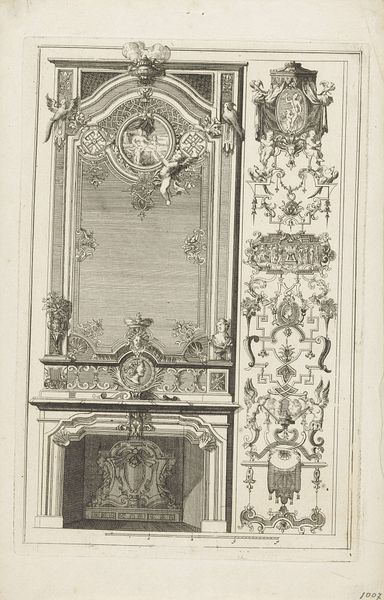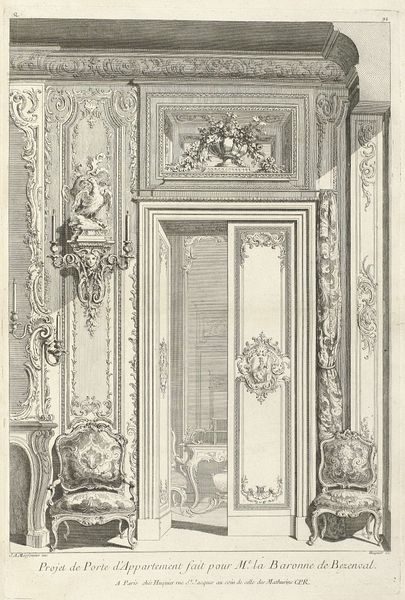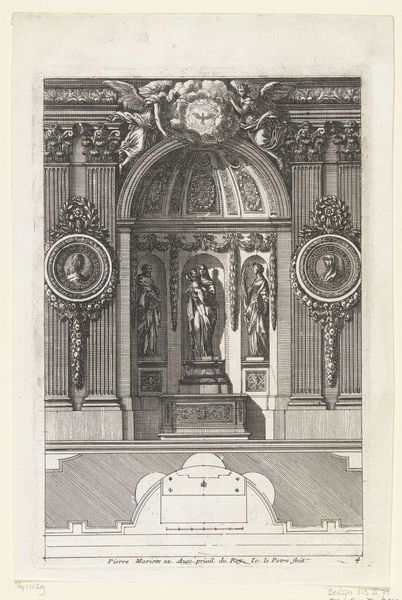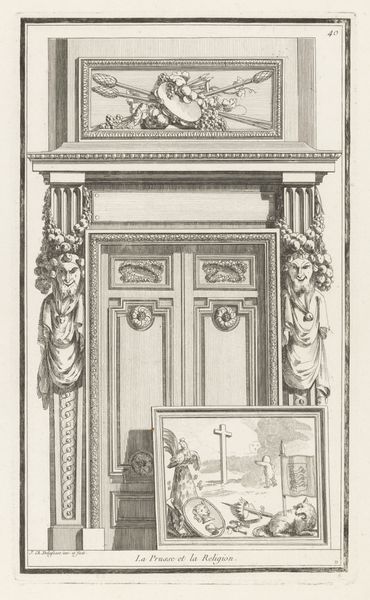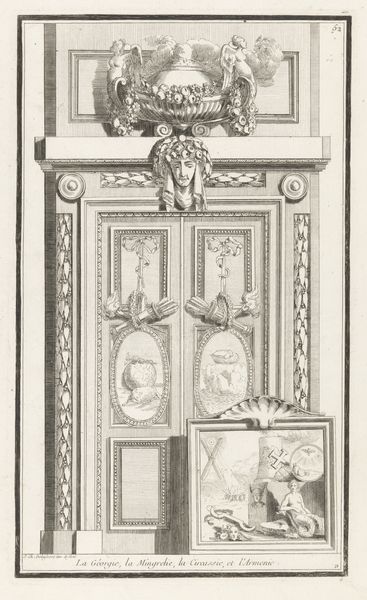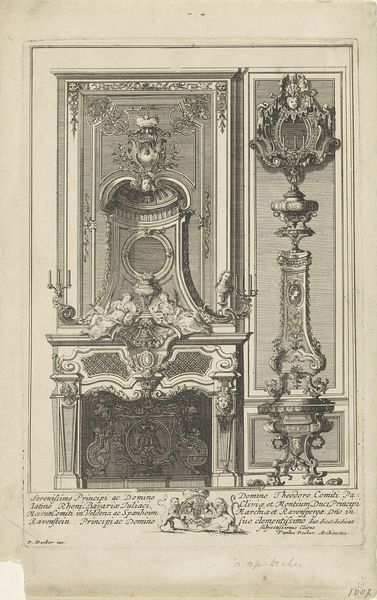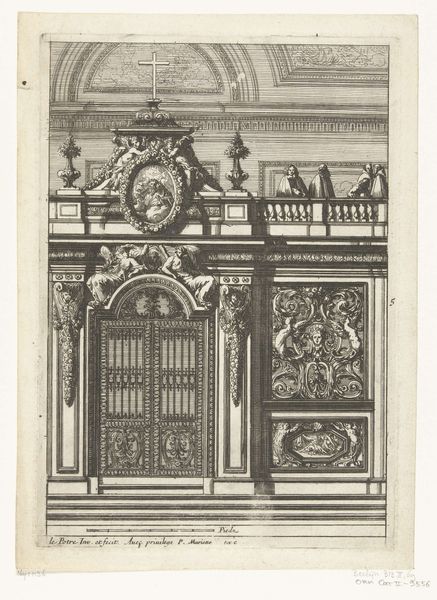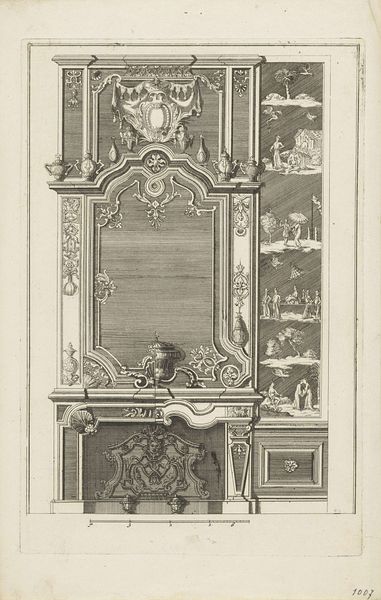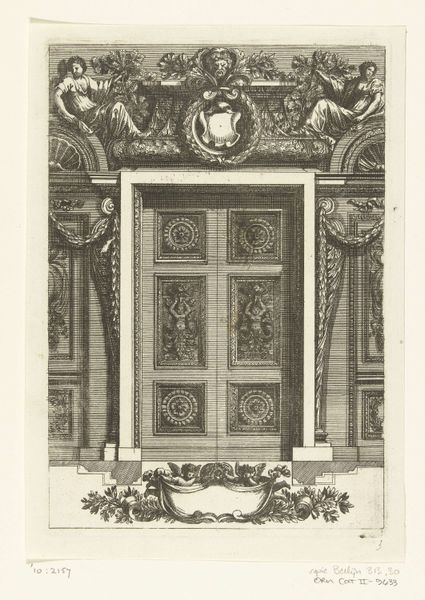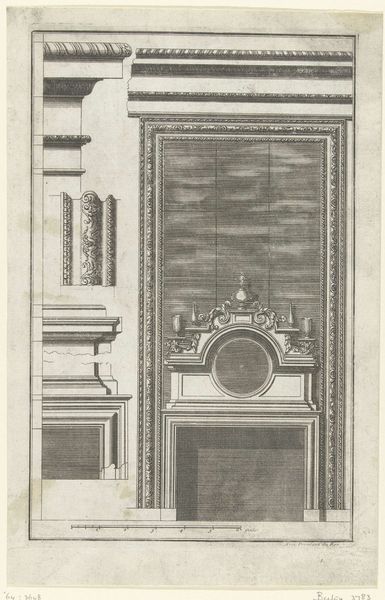
Pennenttafel met spiegel en decoratie in het kabinet van de graaf van Bielinski 1738 - 1749
0:00
0:00
drawing, engraving, architecture
#
drawing
#
baroque
#
perspective
#
line
#
engraving
#
architecture
Dimensions: height 542 mm, width 345 mm
Copyright: Rijks Museum: Open Domain
Editor: This is Maurice Baquoy's "Pennenttafel met spiegel en decoratie in het kabinet van de graaf van Bielinski," created between 1738 and 1749. It's an engraving depicting a room interior. I'm struck by the mirror; it creates this infinite, almost unsettling depth. What do you see in this piece? Curator: I see a potent allegory of power and perspective, deeply embedded in the symbols of its time. The infinite regression in the mirror doesn't merely reflect space; it echoes the seemingly limitless reach and endurance of nobility, constantly reminding us of the family line stretching back into history and forward into the future. Editor: So the mirror symbolizes lineage and power? Curator: Precisely. Mirrors in art often symbolize self-reflection, truth, or vanity, but here, the repetitive reflection speaks more to dynastic legacy. Consider the baroque ornamentation; these motifs are not just decorative; they're carefully chosen emblems of status, taste, and cultural authority. Even the depicted architecture of the reflected space alludes to established strength. Notice how it all focuses the gaze inward, inviting the viewer to be enveloped. Do you think that is a conscious choice? Editor: Definitely! The lines all pull your eye toward the center, emphasizing that infinite depth. It makes me think about how controlled and curated every aspect of noble life was back then, down to the reflections in their mirrors. Curator: It's a calculated spectacle, projecting an image of grandeur. But it also offers insight into how elites wished to be perceived—not as individuals but as custodians of something far greater than themselves. The image becomes a portal into the psyche of power itself. Editor: That's a fascinating way to look at it. I initially just saw a pretty room, but now I realize it's communicating a lot more about the values of the time. Curator: Indeed, it is amazing how art can transform over time, by connecting the artist, artwork, patron, and art appreciator through their own symbolical framework and cultural memory.
Comments
No comments
Be the first to comment and join the conversation on the ultimate creative platform.
